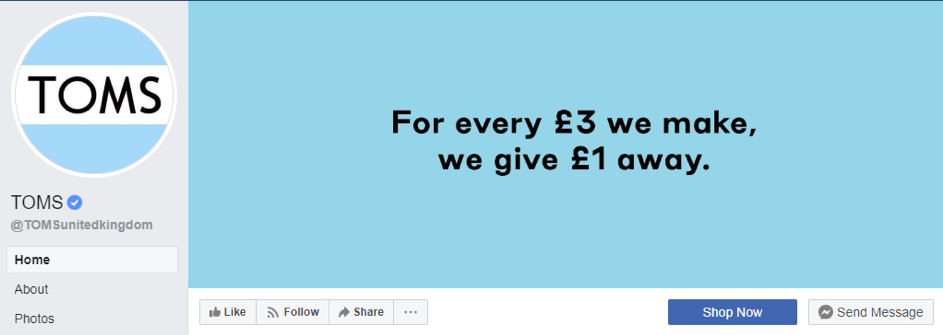Social media remains a powerful channel for brands to connect with their audiences in 2020. But while it’s effective, it’s getting harder and harder to do so.
Social audiences have grown increasingly cynical. Over-marketing, the proliferation of paid ads, and saturation of social have led to a social user base that is growing harder and harder to connect with.
But it’s not impossible.
Read on to learn how we got to this stage and how to capture a cynical social media audience in 2020.

Why so cynical? How audiences became distrustful of brands on social
Depending on who you ask, social media is around 20 years old. Starting with primitive social networks such as Six Degrees and evolving into apps like TikTok and Instagram today, social has come a long way.
As social has grown, so too have audiences grown with it. With social media a permanent and ubiquitous fixture in our lives, users have become increasingly weary of it, especially from brand accounts.
This is down to a mixture of things. Overexposure to brand messages (both on social and elsewhere) is one cause, leading to tedious over-marketing that makes people switch off.
At the same time, many brand accounts feel artificial and disingenuous. Savvy users have grown tired of being sold to, demanding value over cheap sales pushes. As a result, audiences have become increasingly cynical of brands on social.
A word on the importance of customer relationships
So with such a cynical audience, how can brands connect with them in a genuine way?
The answer lies in relationship-building.
If you want to circumvent this endemic cynicism and connect with your audience, it’s crucial that you build relationships with your customers.
Relationships with your customers work in the same way as relationships with your friends and family — it’s a mutually-beneficial connection that adds value to their lives.
This value, whatever form it might take, encourages audiences to return to your social profile time and again for more of the same purpose and meaning.
Five methods for capturing a cynical audience
So how can you overcome this cynicism and build a relationship with your audience? Here are a few strategies to get you started.
Establish your brand ethos and values
Your social channels give you a platform to speak directly to your audience. This is an important privilege, and abusing it by saturating it with generic or pithy sales messages will detract from its value.
Check out this example from eco-friendly shoe brand, TOMS:

As soon as you arrive on its Facebook page, you see a clear, bold cover photo that highlights how it gives away an impressive 30% of its profits. Consequently, TOMS immediately makes its values clear and visible to an otherwise cynical social media audience.
Use your social media platform to establish your brand ethos and values. Make clear who you are and what you stand for. It is this latter part which is of most importance. Any brand can sit on the fence, but it won’t get you noticed — establish the values upon which you hang your hat, and your audience will sit up and take notice.
Lean on influencers to reach brand-savvy audiences
The role of influencers might have taken a knocking in recent years — the Fyre Festival incident being of particular note — but they remain one of the best ways for brands to connect with their audiences. Influencers still play an important role in appealing to social audiences, especially in 2020.
Influencers circumvent the cynicism of modern audiences by offering genuine messages that are trusted and, crucially, unbranded. Brands can tap into the existing relationship between influencers and their followers to strengthen their own relationships with their audience.
Strive for a genuine voice that connects with consumers
Part of social audiences’ cynicism is down to the barrage of homogeneity from the brands they follow. When so many brands sound the same on social, it’s worth distancing yourself from that and cutting your own path.
Take the drinks brand Innocent, for example. It arguably pioneered the cute and quirky tone of voice, leading many other brands to attempt to emulate it (with varying degrees of success). Check out this example below:
This isn’t the usual fare you’d find from a typical drinks company’s post. But it’s humorous, a little left-field, and above all, genuine. It’s not spit-polished and full of corporate language — it feels real, and it has greater impact as a result.
Now, there are a plethora of other brands adopting this same ‘unique’ voice, and it lacks the freshness it once offered.
Of course, adopting a fresh and unique attitude on social can be tricky. There’s nothing new under the sun, and it’s easy to unconsciously mimic other brands.
Consequently, rather than trying to break new ground, simply be genuine in the management of your social media accounts. Don’t try to be something you’re not and speak to your customers as you would anyone else in a face-to-face situation.
If you’re truly genuine and speak to your customers as people, not a generic audience, it will shine through and connect with them on a true, personal level.
Ditch the hard sell and provide value over all else
There is such a thing as over-marketing. The aforementioned platform upon which brands can directly reach their audience is easily misused, and businesses frequently barrage their audience with hard-sales messages.
But too much advertising leads to ad numbness, and it only contributes to the cynicism of social audiences. It’s damaging to your brand, to your industry, and to your customer relationships overall.
To that end, eschew your typical sales messages and strive to provide high-quality, value-led content. Don’t view sales as the goal of your social — instead, look at genuine engagement and insights as your end goal.
Value takes many forms, more so than simply conversions — appeal to your customers as personalities rather than sales targets, and you will nurture a solid relationship that lasts and lasts.
Appeal to your audience as people, not generic collectives
One of the most important things to remember when you’re building relationships with your customers? They are people, not opportunities.
This means tailoring your communications so that they speak to different audience personas. Your buyer personas play a role in this, but you should combine it with the built-in analytics offered by each social platform to inform and shape the way you speak to your audience. Facebook Insights is especially good for appealing to personas on Facebook.
Create social posts and accompanying content that appeals to your social media personas. Stagger this content across times and dates so it doesn’t saturate your (and your customers’) news feeds.
In this way, you speak to each distinct audience segment on a deeper, more meaningful level. It makes them feel unique, rather than part of the crowd, dissipating that cynicism as a result.
Even the most cynical audience can be warmed with a steady, sustained campaign with a focus on relationship-building. It might take time but it’s a goal worth striving for. Follow the tips above and build solid, value-led relationships that overcome audience cynicism and work for your brand time and time again in 2020.




